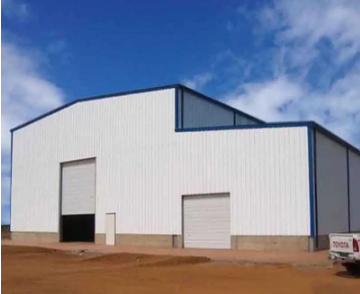Structural Marvels: A Journey Through Iconic Construction Engineering Feats
In the realm of construction engineering, the Qingdao Omiga Construction Engineering Co represents a beacon of innovation and expertise, embodying the spirit of architectural ingenuity and structural prowess. This journey into the world of iconic construction feats takes us beyond the boundaries of ordinary engineering, into the realms where creativity meets resilience, and where the impossible becomes possible. From towering skyscrapers that touch the clouds to bridges that span the breadth of majestic rivers, the marvels of construction engineering are testaments to human ingenuity and the relentless pursuit of excellence.
As we delve deeper into the architectural achievements that have shaped our modern landscape, the Eiffel Tower in Paris, France, stands as an enduring symbol of structural elegance and engineering marvel. Constructed in 1889 as the entrance arch to the 1889 World's Fair, it was initially criticized by some of France's leading artists and intellectuals for its design but has since become a global icon of French identity and ingenuity. The tower's intricate iron lattice work, not only showcases the aesthetic appeal of industrial materials but also illustrates the innovative use of iron in achieving unprecedented heights.
Crossing continents, the Brooklyn Bridge in New York, USA, emerges as another hallmark of construction engineering brilliance. Completed in 1883, this hybrid cable-stayed/suspension bridge was the world's first steel-wire suspension bridge. Linking Manhattan and Brooklyn by spanning the East River, it exemplifies the blend of form and function, demonstrating not only the potential for bridges to become iconic landmarks but also their critical role in urban connectivity and development. Visit https://www.xgzbuilding.com/
Venturing to the East, the Great Wall of China illustrates an ancient yet timeless marvel of construction engineering. Stretching over 21,000 kilometers, this immense wall was built over several centuries to protect Chinese states and empires from various nomadic groups of the Eurasian Steppe. The Great Wall represents not only a feat of military defense but also a monumental achievement in terms of logistics, manpower, and material coordination over vast distances and challenging terrains.
In the field of modern skyscrapers, the Burj Khalifa in Dubai, UAE, stands as a pinnacle of contemporary engineering and architectural design. Soaring to a height of 828 meters, it holds the title of the world's tallest building since its completion in 2010. The Burj Khalifa's innovative design, including its Y-shaped base for stability and wind resistance, exemplifies the cutting-edge advancements in skyscraper technology. Its construction involved international collaboration, showcasing the global nature of modern construction engineering.
Another remarkable example of engineering innovation is the Millau Viaduct in southern France. Completed in 2004, this cable-stayed bridge is the tallest of its kind in the world, with one mast reaching 343 meters. It spans the valley of the River Tarn and is admired not only for its structural beauty but also for its solution to a significant transportation challenge. The viaduct's design minimizes environmental impact while providing a critical link in the French transportation network.
The journey through these structural marvels is not just about the awe-inspiring heights, spans, or designs that they achieve; it is also a testament to the collaborative spirit of engineers, architects, and workers who bring these visions to life. Each project, from the historical wonders of the Great Wall of China to the modern majesty of the Burj Khalifa, embodies a unique blend of challenges and innovations.
These iconic feats of construction engineering also underscore the importance of sustainability and resilience in modern design. As we continue to push the boundaries of what is architecturally possible, the lessons learned from these marvels guide us towards creating structures that not only captivate the imagination but also respect the environment and ensure safety and durability.
In conclusion, the field of construction engineering continues to evolve, inspired by the legacy of iconic structures that dot our landscapes. The journey from the intricate ironwork of the Eiffel Tower to the soaring heights of the Burj Khalifa reflects a history rich with innovation, ambition, and the relentless pursuit of excellence. As we look to the future, the story of construction engineering is far from complete; it is a narrative continually being written by the daring dreams of today's architects and engineers. In this ongoing saga of structural marvels, the only limit is the sky itself.



Comments
Post a Comment